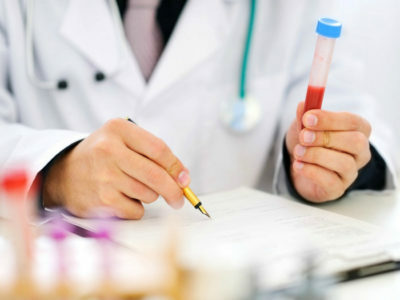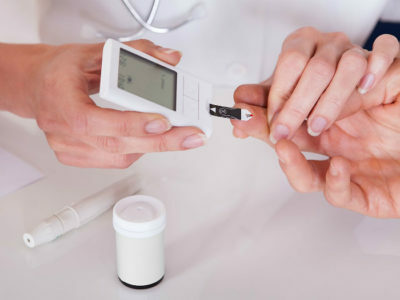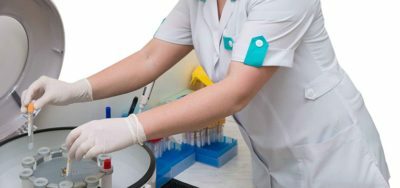1 General recommendations of
If it is necessary to pass a biochemical blood test, preparation for it includes a number of standard rules and a list of general recommendations. Their observance will help to make the blood the most suitable for collection and laboratory study. So, the preparation for biochemical blood analysis contains the following items:
- The blood collection procedure is performed only on an empty stomach. This factor is especially important, as the trace elements contained in food can affect the blood composition and reduce the truth of the result. Between the last eating of food and the analysis itself, a period of 6-8 hours must pass. At this time it is allowed to drink purified unsweetened water.
- If the main objective of the study is to find out the exact amount of sugar in the blood( such an analysis is prescribed for suspected diabetes), then even cleaning your teeth in the morning before the procedure is impermissible.
- If the patient has a referral to other procedures( eg MRI, injections, droppers, etc.) on the day of blood donation for biochemical analysis, then first of all blood is surrendered.
- Reliability of indicators of organs such as the gallbladder, liver and pancreas, completely depends on the diet for several days before the procedure. On such days it is advisable to avoid using too sharp dishes, fast food, spicy sauces and fried in vegetable oil food.
- The consumption of fat also needs to be taken under strict control. When saturated with fats, blood serum becomes rapidly coagulated and cloudy.
- During preparation for the analysis, a person should be very careful about taking any medications. Most of them significantly affect the composition of the blood. Usually, if a referral is given by a doctor, he himself reviews the list of medications that are allowed to be taken during this period. If the analysis is your initiative, then it is necessary to consult the doctor first.
- On the eve of the procedure a person should devote time to rest and protect himself as much as possible from any kind of physical exertion.
-
 IMPORTANT TO KNOW! Gastritis? Ulcer? To have a stomach ulcer not turned into cancer, drink a glass. ..Read the article & gt; & gt;
IMPORTANT TO KNOW! Gastritis? Ulcer? To have a stomach ulcer not turned into cancer, drink a glass. ..Read the article & gt; & gt;
After the analysis and results, the doctor, based on the indicators, can easily confirm or deny a diagnosis.
2 What are the indicators considered in the study?
Standard analysis allows you to clarify the presence of a suspected disease due to consideration of the obtained indicators in their totality. It should be noted once again that the deciphering of the result obtained should only be done by the attending physician, since small deviations of one or several indicators from the norm are not always a sign of pathologies. The main list of indicators is as follows:
- The amount of glucose in this case is not only a measure of blood sugar, but also a demonstration of the correctness of the pancreas.
- The amount of bilirubin in the analysis taken tells about the proper performance of its functional duties with the liver.
- Cholesterol.
- Albumin.
- Urea.
- Protein.
- Beta-globulin.
-
 Gastroenterologist. IMPORTANT: "I beg you, if you began to worry about abdominal pain, heartburn, nausea, do not in any way do gases. .."Read more & gt; & gt;
Gastroenterologist. IMPORTANT: "I beg you, if you began to worry about abdominal pain, heartburn, nausea, do not in any way do gases. .."Read more & gt; & gt;

Recommended reading
- Table for decoding the biochemical blood test in adults
- How is the coagulogram
- analyzed? How to give scrapings for enterobiasis?
- Effective agent for gastritis and gastric ulcer
3 The question of the norm and the reasons for the deviations of
Any experienced specialist will confirm that even the slightest deviation of the indicators from the norm may indicate the violations that have arisen in the body and failures in the work of the organs. On the other hand, such deviations may be a consequence of age-related changes in the human body, features of the body's condition( for example, during pregnancy and lactation) and come back to normal with time. In any case, to make any conclusions from the results can only be entrusted to the treating doctor. Let's consider the norm of indicators of the LHC and the causes that contribute to the occurrence of deviations.
In a healthy person, normal glucose values fluctuate between the following figures: 3-6 mmol / l blood. In the elderly, the upper figure may increase, which will not be considered a deviation. In children, the upper limit should not exceed 5.5 mmol / l. If the test score is below 3 mmol / L, this may indicate severe hormonal disorders in the body. A deviation upward indicates a possible presence of diabetes mellitus.
ADVICE FROM THE MAIN GASTROENTEROLOGIST
Korotov SV: "I can recommend only one remedy for the rapid treatment of Ulcer and Gastritis, which is now recommended by the Ministry of Health. .." Read the reviews & gt; & gt;

The norm of bilirubin is from 3.3 to 17 μmol / l. If the newborn child suffers from jaundice, the indicator may increase. This is a consequence of improper operation of the child's liver. Lowering the norm of bilirubin in most cases is not considered as a pathological change.
Cholesterol fluctuations in the blood are acceptable in the range from 3.2 mmol / l to 5.6 mmol / l. Since most of the cholesterol is produced inside the human body, and not formed along with the food used, the increase in its level is a symptom of a disturbed metabolism.
Normal limits of albumin in the blood are 35-53 g / l. An increase in the range of the indicator indicates dehydration of the body.
Urea is also an important indicator. The norm of the presence of urea in 1 liter of blood is 2.4-6.4 mmol. When this substance is formed in the body, the release of ammonia begins, which can cause poisoning. Urea is processed and excreted from the body by the kidneys. That is why increasing the border of the indicator may indicate problems in the work of the kidney system. Lowering the norm of urea in the blood gives an opportunity to test the work of the liver.
The following ratio of protein and blood is considered normal: 60-80 g per 1 liter of blood. A decrease in indicators indicates a person's malnutrition or a malfunction in the kidneys and liver. Increased indicators can be a consequence of the occurrence in the body of inflammatory processes, infectious diseases. In addition, the protein can be increased in those who have recently received burns.
Beta-globulins are constituents of the protein. Normal indicators of beta-globulin are observed in the range of 8-16%.If there is a deviation from the norm, this may be a sign of a violation of fat metabolism in the body.
Whatever the results, remember that familiarizing them with your doctor is an indispensable condition. It is he who must draw the appropriate conclusions and, when finding deviations, identify the causes of such violations. In the event that the preparation for blood donation has not passed in accordance with the established rules, such results may be erroneous. In this situation, the analysis is re-assigned.
- 1 General recommendations of
- 2 What are the indicators considered in the study?
- 3 The question of the norm and the causes of the deviations
Preparing for blood testing for biochemical analysis is an important step before the mentioned procedure. The latter is by far the most accessible and effective for diagnosing the general condition of the body. The results of the analysis clearly demonstrate the correct operation of all systems in the human body. Most often, such an analysis is prescribed to clarify the correctness of the diagnosis or for general preventive examination.
Do you have gastritis?
GALINA SAVINA: "How easy is it to cure gastritis at home for 1 month. A proven method - write down a recipe. ..!"Read more & gt; & gt;
Blood delivery takes place in the laboratory. Usually, similar procedures are performed in the morning on the appointed day. The paramedic bandages the shoulder of the patient with an elastic tourniquet and uses a syringe to take the necessary amount of venous blood. The success and painlessness of the procedure depends only on the professionalism of the nurse, but the reliability of the results should be influenced by the patient himself. To do this, special training is conducted, which the doctor in charge must tell you about.



